|
|
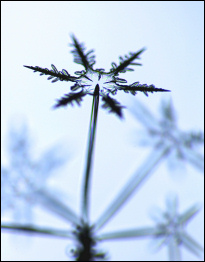
Snowflake on a Stick
This
is a neat trick for making designer snowflakes in the
laboratory.
First I grow thin ice needles by applying 2000 volts to a central wire
(near the bottom of the photo).
After making the needles, I
turned off the high voltage, and then ordinary stellar snow crystals
grew on the ends of the needles.
|
|

This
time-lapse video shows a stellar snow crystal growing on an electric
needle. It took 20 minutes to make this crystal, plus another minute or
so to make the electric needle.
|
|
|
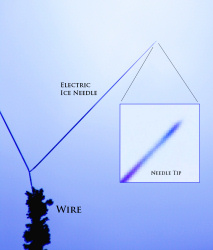 How does it work? How does it work?
The
basic idea is to use strong electric fields to modify the ice growth
behavior, a technique that was discovered in 1963 by Basil Mason and
his collaborators at Imperial College London. We made some advances in
this technique in our lab as well, improving the needle production and
making it more reliable. The high voltage produces strong electric
fields around an ice needle tip, which pulls in more water molecules
from the air, thus making the tip grow faster.
The physics details are seriously complicated, and are
provided in the references below.
The
process is almost magical to watch. I start with a thin wire covered
with frost crystals. Then I turn on the high voltage, and in a few
seconds several needles grow rapidly out from the wire. Near the tips,
the needles are maybe 100 times thinner than a human hair!
|
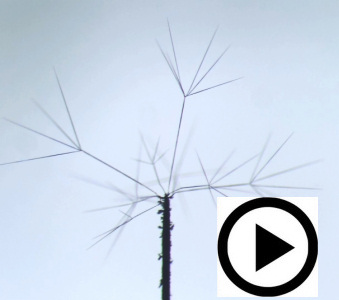 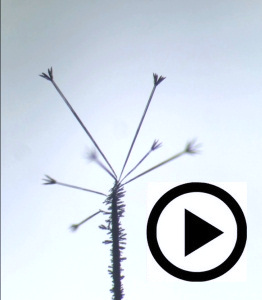
These two videos show the growth of electric needle crystals in real time ....
1st video: small - medium - large
2nd video: small - medium - large |
|
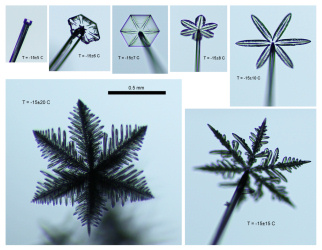 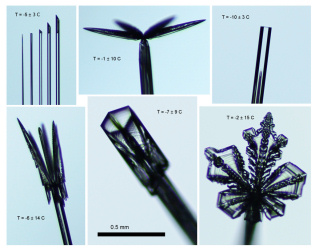 Stars, sheaths, and blocks Stars, sheaths, and blocks
Once
I make some electric ice needles, I can then grow many different kinds
of snow crystals on their ends. These were all grown at different
temperatures and supersaturations, in keeping with what one expects
from the snow
crystal morphology diagram.
We are using this technique to better understand how these crystals
grow, and why they have the shapes they do. |
|
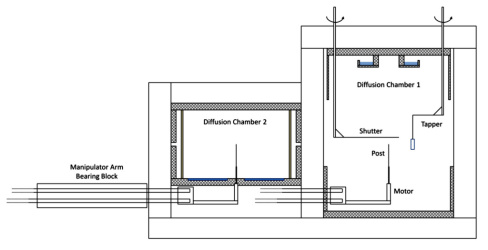 The hardware The hardware
Alas,
putting all this together is not a quick weekend project. It took me
several years and about ten thousand dollars to get it all working, and
there is no faster, cheaper, easier way to do it (that I know of,
anyway; if there were, I would have done it that way!).
Making
snowflakes is an unusual occupation, and I am currently the only person
in the world studying snow crystal growth using electric ice needles. |
|
Some
References
A basic mathematical description of the electric ice growth instability
is given here:
Electrically
induced morphological instabilities in free dendrite growth, by K. G.
Libbrecht and V. M. Tanusheva, Phys. Rev. Lett. 81, 176 (1998).
A longer, more detailed mathematical treatment is given here:
Electrically
enhanced free dendrite growth in polar and non-polar systems, by K. G.
Libbrecht, T. Crosby, and M. Swanson, J. Cryst. Growth 240,
241
(2002).
A description of the laboratory hardware used to make these crystals is
given here:
A dual diffusion chamber for observing ice crystal growth on c-Axis ice
needles, by Kenneth Libbrecht, arXiv:1405.1384 (2014). |
|
|
|
|
|
|
